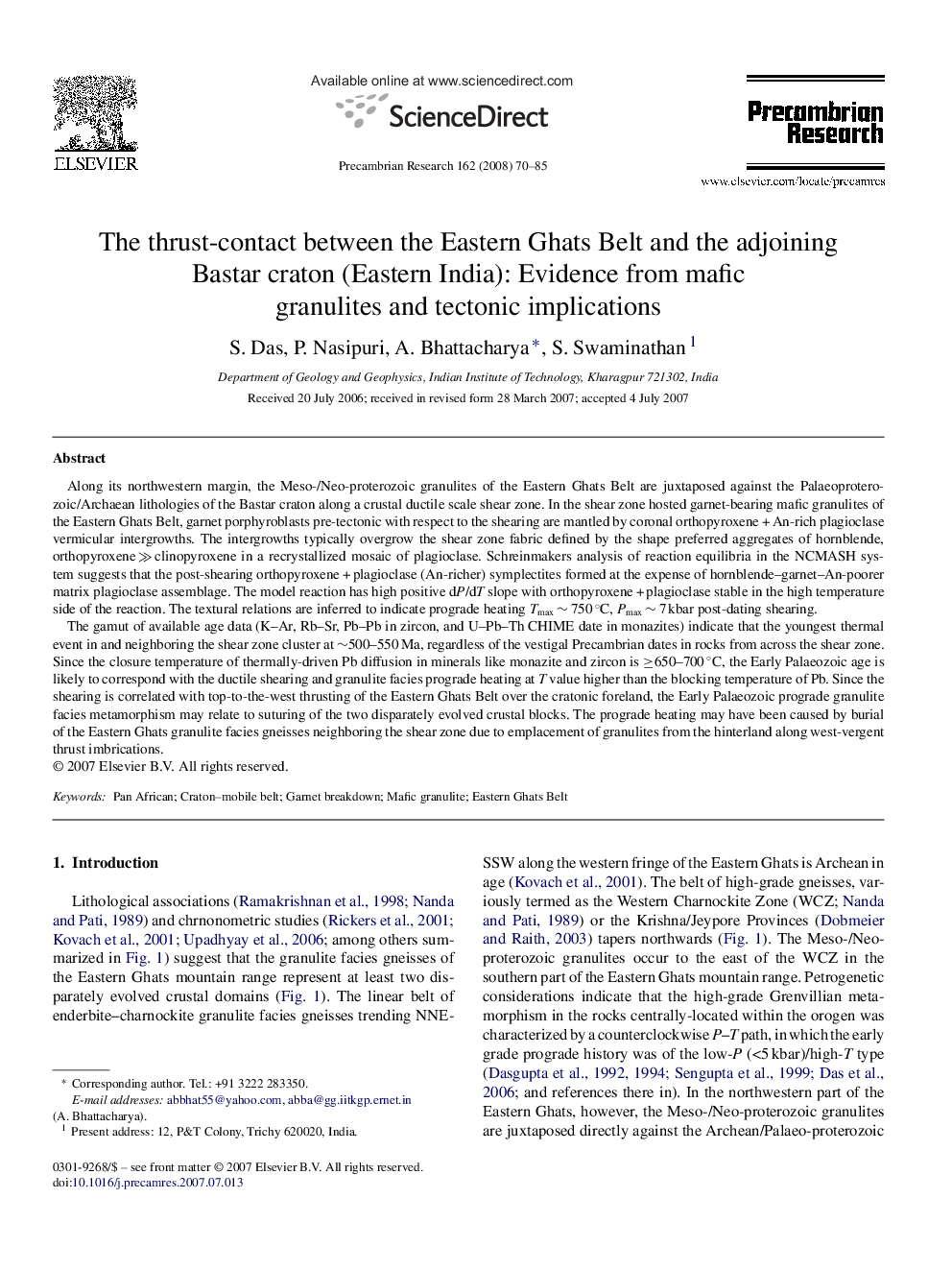| Article ID | Journal | Published Year | Pages | File Type |
|---|---|---|---|---|
| 4724266 | Precambrian Research | 2008 | 16 Pages |
Along its northwestern margin, the Meso-/Neo-proterozoic granulites of the Eastern Ghats Belt are juxtaposed against the Palaeoproterozoic/Archaean lithologies of the Bastar craton along a crustal ductile scale shear zone. In the shear zone hosted garnet-bearing mafic granulites of the Eastern Ghats Belt, garnet porphyroblasts pre-tectonic with respect to the shearing are mantled by coronal orthopyroxene + An-rich plagioclase vermicular intergrowths. The intergrowths typically overgrow the shear zone fabric defined by the shape preferred aggregates of hornblende, orthopyroxene ≫ clinopyroxene in a recrystallized mosaic of plagioclase. Schreinmakers analysis of reaction equilibria in the NCMASH system suggests that the post-shearing orthopyroxene + plagioclase (An-richer) symplectites formed at the expense of hornblende–garnet–An-poorer matrix plagioclase assemblage. The model reaction has high positive dP/dT slope with orthopyroxene + plagioclase stable in the high temperature side of the reaction. The textural relations are inferred to indicate prograde heating Tmax ∼ 750 °C, Pmax ∼ 7 kbar post-dating shearing.The gamut of available age data (K–Ar, Rb–Sr, Pb–Pb in zircon, and U–Pb–Th CHIME date in monazites) indicate that the youngest thermal event in and neighboring the shear zone cluster at ∼500–550 Ma, regardless of the vestigal Precambrian dates in rocks from across the shear zone. Since the closure temperature of thermally-driven Pb diffusion in minerals like monazite and zircon is ≥650–700 °C, the Early Palaeozoic age is likely to correspond with the ductile shearing and granulite facies prograde heating at T value higher than the blocking temperature of Pb. Since the shearing is correlated with top-to-the-west thrusting of the Eastern Ghats Belt over the cratonic foreland, the Early Palaeozoic prograde granulite facies metamorphism may relate to suturing of the two disparately evolved crustal blocks. The prograde heating may have been caused by burial of the Eastern Ghats granulite facies gneisses neighboring the shear zone due to emplacement of granulites from the hinterland along west-vergent thrust imbrications.
